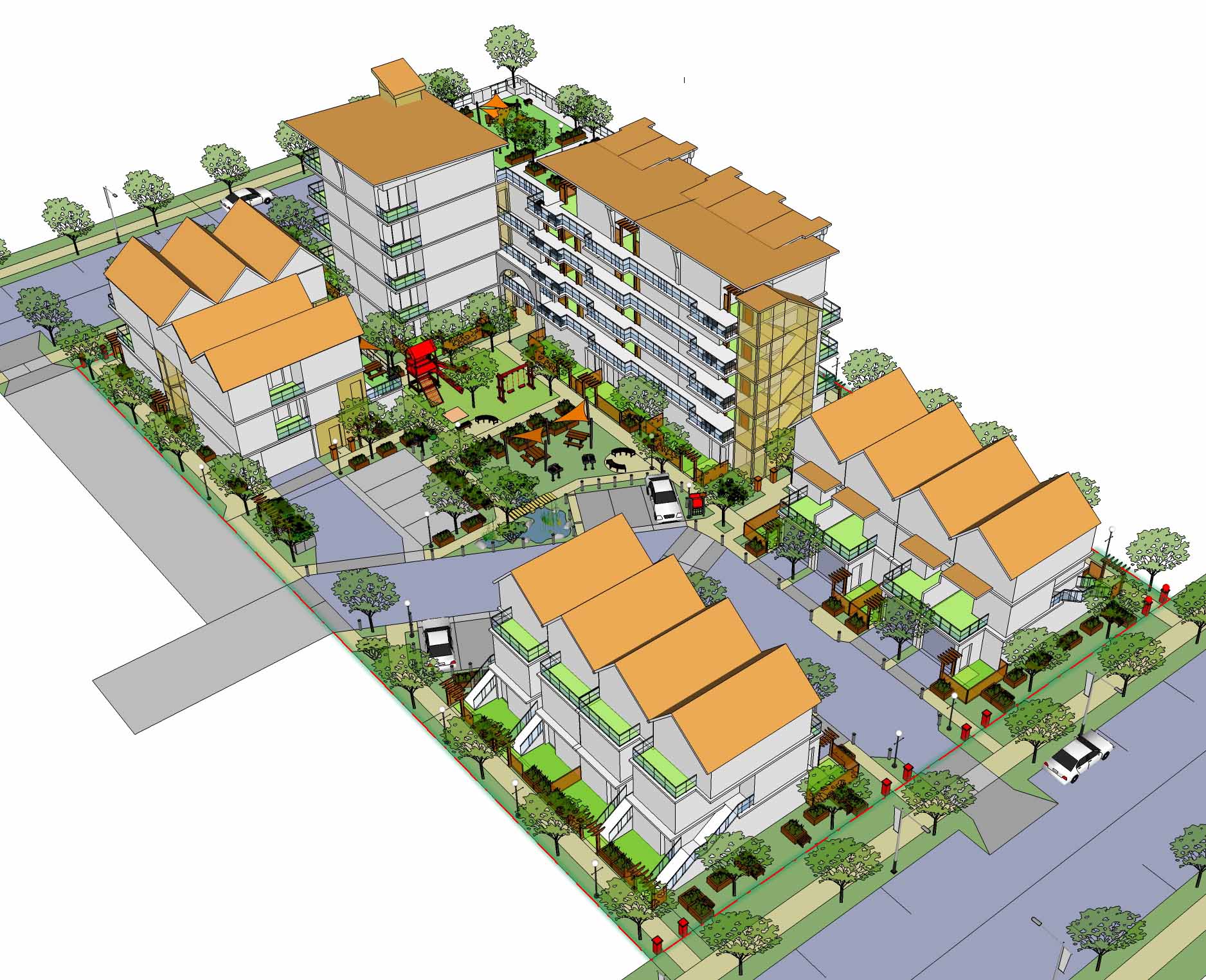Understanding Medium Housing Density
Is the future of urban living stacked high or spread wide? Density, once a byword for overcrowding, is now being reimagined as a key to unlocking affordable, sustainable, and vibrant communities. The challenge lies in finding the right balance a density that fosters connection without compromising livability.
The debate around housing density is often fraught with misunderstanding. What constitutes "low," "medium," or "high" density varies considerably depending on the context. Scholars generally define medium density as ranging from 25 to 80 dwellings per hectare, with the sweet spot often falling between 30 and 40. This translates to a diverse range of housing typologies, including townhouses, row houses, and low-rise apartment buildings. These "missing middle" housing options offer a viable alternative to both sprawling single-family homes and towering high-rises.
| Density Category | Dwellings per Hectare | Dwelling Units per Acre (approximate) | Typical Housing Types |
|---|---|---|---|
| Low | Less than 25 | Less than 10 | Detached single-family homes, rural homesteads |
| Medium | 25-80 | 10-32 | Townhouses, row houses, low-rise apartments, duplexes, triplexes |
| High | Over 80 | Over 32 | High-rise apartments, condominiums, mixed-use developments |
Source: Australian Housing and Urban Research Institute (AHURI)
The demand for denser housing is undeniably increasing, driven by factors like rapid population growth, rising land costs, and a renewed focus on walkable, transit-oriented communities. In rapidly growing urban centers, compact living offers a practical solution to accommodate burgeoning populations while preserving valuable green space. However, density remains a contentious issue in many communities. Concerns about traffic congestion, strained infrastructure, and the potential erosion of neighborhood character often fuel resistance to higher-density development.
The key to achieving "good density" lies in careful planning and community engagement. Zoning regulations play a crucial role in shaping density patterns. These codes, often complex and opaque, can either promote or hinder the development of diverse housing options. Clarifying how density is measuredwhether on a gross or net basisis essential for fostering productive conversations about density. Gross density considers the total area of a development site, while net density excludes features like parks, roads, and other non-residential areas.
Successfully integrating higher density requires a nuanced approach. Simply packing more units onto a site is not enough. Thoughtful design considerations are essential to create livable, attractive, and sustainable dense communities. This includes incorporating green spaces, prioritizing pedestrian and bicycle infrastructure, and ensuring access to essential amenities like schools, shops, and healthcare facilities. Well-designed medium-density housing can offer a desirable lifestyle, fostering a sense of community and reducing reliance on cars.
The missing middle housing types, such as townhouses and row houses, are particularly well-suited to achieving this balance. These typologies can seamlessly integrate into existing neighborhoods, providing much-needed housing supply without drastically altering the character of the area. They offer the benefits of both single-family homesprivacy, outdoor spaceand apartmentswalkability, affordabilitymaking them an attractive option for a wide range of residents.
The perception of density as inherently "ugly" is a misconception. Well-designed dense developments can be aesthetically pleasing and enhance the urban landscape. In fact, many vibrant and desirable cities around the world are characterized by their density. From the charming brownstones of Brooklyn to the bustling streets of Copenhagen, density can create a dynamic and engaging urban environment. The challenge lies in moving beyond simplistic notions of density and embracing its potential to create more equitable, sustainable, and vibrant communities.
The phenomenon of urban sprawl, driven by zoning regulations favoring single-family homes and the ubiquity of cars, has contributed to social separation and environmental degradation. Embracing denser development patterns can help reverse this trend, fostering more connected and sustainable communities. This requires a shift in mindset, from viewing density as a problem to recognizing it as a solution. By carefully planning and designing for density, we can create urban environments that are both livable and thriving.
The ongoing debate about density highlights the need for informed discussion and innovative solutions. Developing tools and resources to measure and understand density is crucial for effective urban planning. This includes educating communities about the benefits of well-designed density and addressing concerns about its potential impacts. The future of our cities depends on our ability to embrace density, not as a necessary evil, but as an opportunity to create more vibrant, sustainable, and equitable places to live.
In the coming years, the conversation around density will undoubtedly continue to evolve. As cities grapple with the challenges of growth and change, embracing density will be essential for creating communities that are both resilient and desirable. The key is to find the right balance, a density that fosters connection without compromising livability, a density that builds a future where urban living is both sustainable and enriching.


